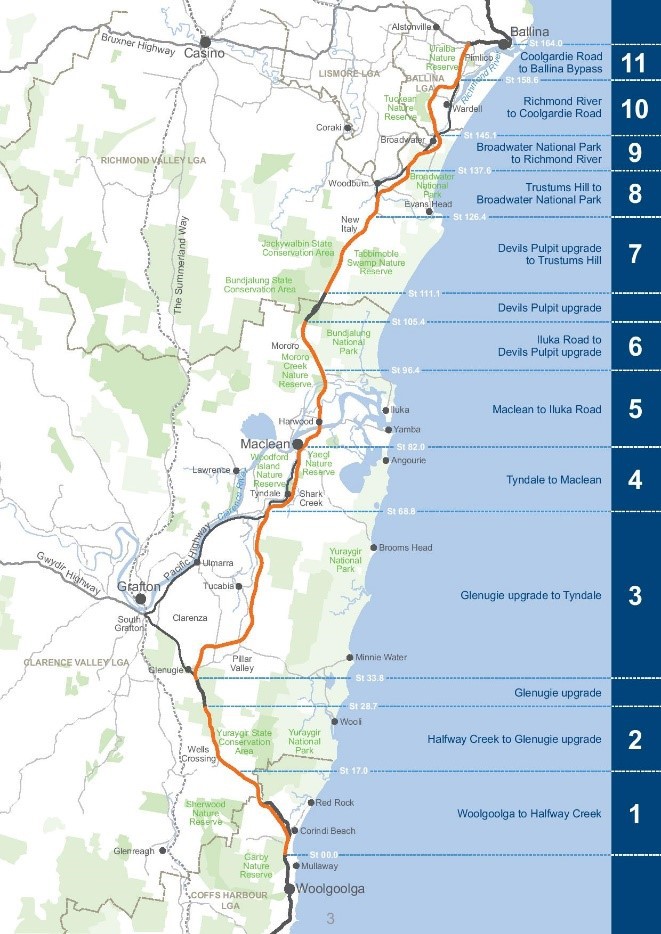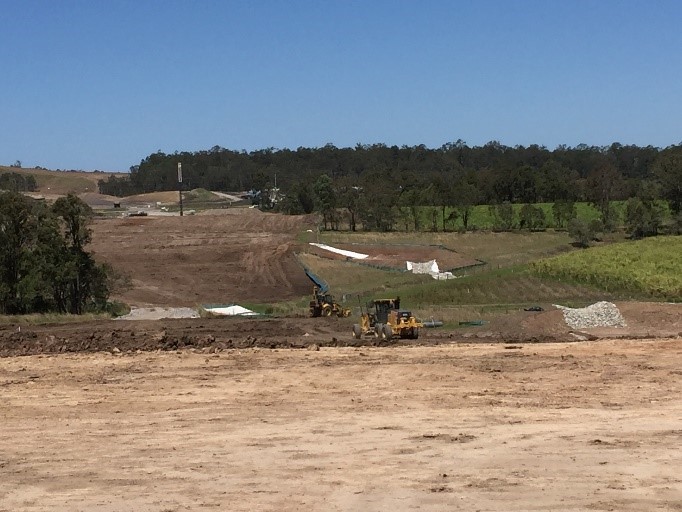Woolgoolga to Ballina
Recently I had the opportunity to visit the Woolgoolga to Ballina (W2B) road upgrade project. This is a $4.2B, 5-year scheme to upgrade and widen 155km of the Pacific Highway between Woolgoolga and Ballina in Northern NSW. The project is being designed and managed by Pacific Complete – a joint venture between Laing O’Rourke and Parsons Brinkerhoff – under a Delivery Partner model for the Department of Roads and Maritime Services (RMS) and is characterised by the division of work into packages called ‘waves’ – possibly due to the location of the project next to some beautiful NSW beaches.

As I travelled down from Ballina it was good to witness such a diversity of contractors at work. The vast majority were companies that would be classified as Tier 2 or below such as Golding, FK Gardner, Seymour Whyte and SEE Civil. Undoubtedly many of these companies will also be subcontracting large amounts of work to smaller, invariably local, businesses thus providing a boost to a regional economy where infrastructure work has recently been in short supply.
It is great to see such a project providing opportunities for businesses of all sizes to benefit from the investment being made in a key infrastructure project however, if there is one thing that over 20 years’ experience in contract management has taught me it is that along with benefits and best intentions, large scale programs bring challenges when dealing with layers of contractors and sub-contractors.
Contractual Food Chain
At the top of the food chain, The Managing Contractor / Programme manager / Delivery Partner (in this case Pacific Complete) will commonly be incentivised by use of performance ‘carrots’ for Key Performance Indicators such as overall cost of the project and time to complete.

Contractors, on the other hand, will undoubtedly have been engaged on contract terms that include big sticks to beat them with if they start falling behind. These terms will then flow down through the contractual food chain to those least able to defend themselves when the schedule status starts to slip – regardless of reason for the slippage.
These smaller contractors will, whether the contract terms allow or otherwise, likely be forced to wait whilst any claims are passed back up the chain for review by a Delivery Partner who has little incentive to approve them.
This lack of alignment and an eagerness to improve or maintain wafer thin profit margins will be a recipe for disputes. Regrettably such disputes can take a long time to resolve and cause enormous financial strain for undercapitalised contractors. This strain, more often than not, results in a desire for quick settlements even if that means accepting less than perceived full entitlement. A fact not lost on Contractors higher up the food chain looking to bolster their own profit margins.

Increase the chance of success
At Brackenway, it is a situation that we have seen time and time again in the industry and is considered just part of doing business. There are however several relatively easy steps that can be taken by Contractors to reduce the likelihood that waves of construction will lead to wave after wave of claims and protracted arguments:
- Take time to effectively understand your contractual rights and obligations. (What do I have to do when and what should I expect in return).
- Ensure you comply with your contractual obligations – particularly in regard to the timely giving of notice. (If accused of being contractual, politely point out that you are just complying with their requirements)
- Always aim to discuss important matters with the Main Contractor / Principal in person before committing to print (see last week’s Blog ‘A Privileged Pint’).
- Seek to resolve matters progressively and have an agreed system for escalating disputes to avoid then becoming stuck at an operational level (if not managed well the deterioration in relationships in the field can have a snow ball effect which results in more claims and counter claims).
- Ensure that accurate records are kept of all resources utilised on the project and what they were doing at any given time (and more importantly what they were not doing and why).

Following these simple steps is a bit like swimming between the flags – it will not stop you from getting dunked occasionally or being caught in a rip but it should ensure you do not go under.

